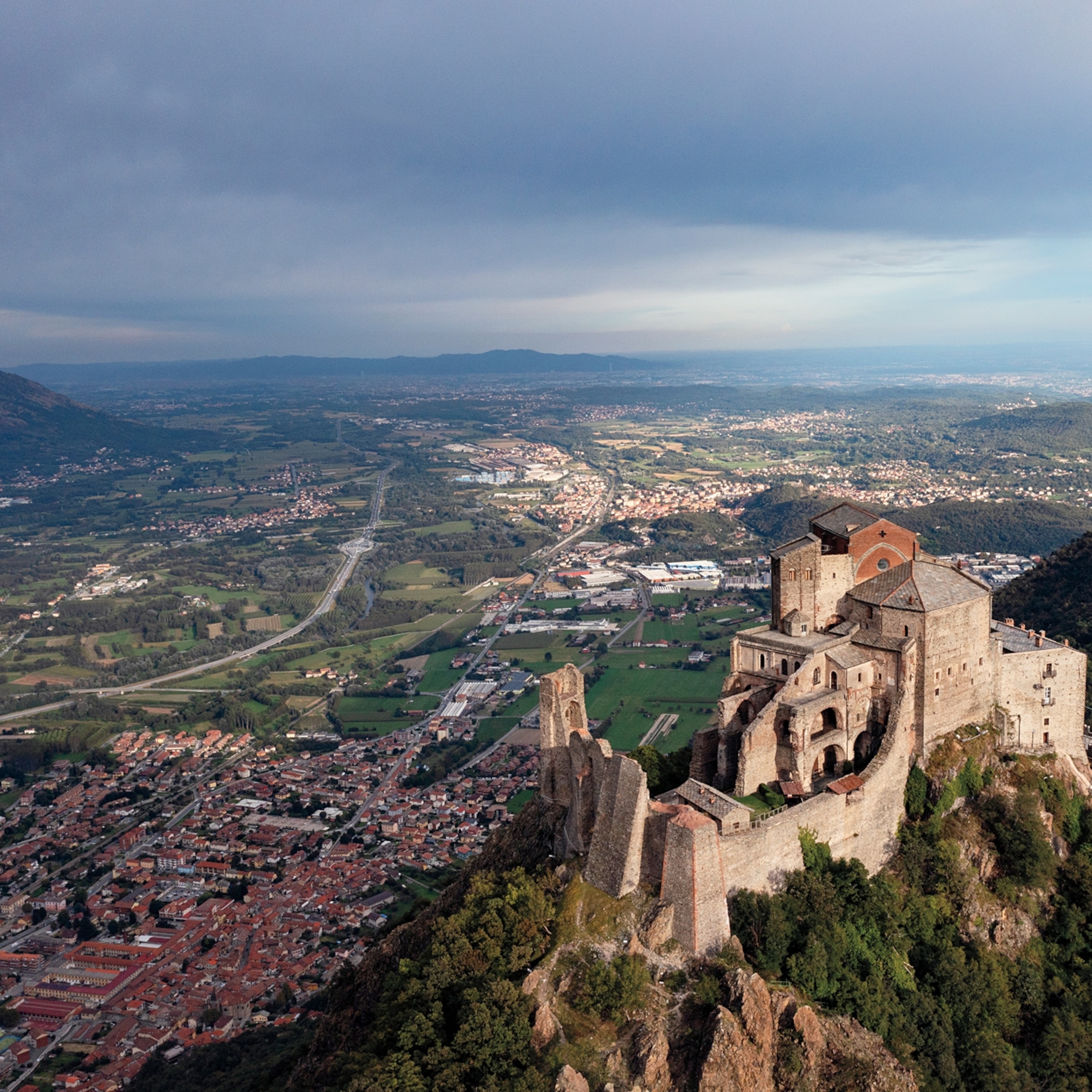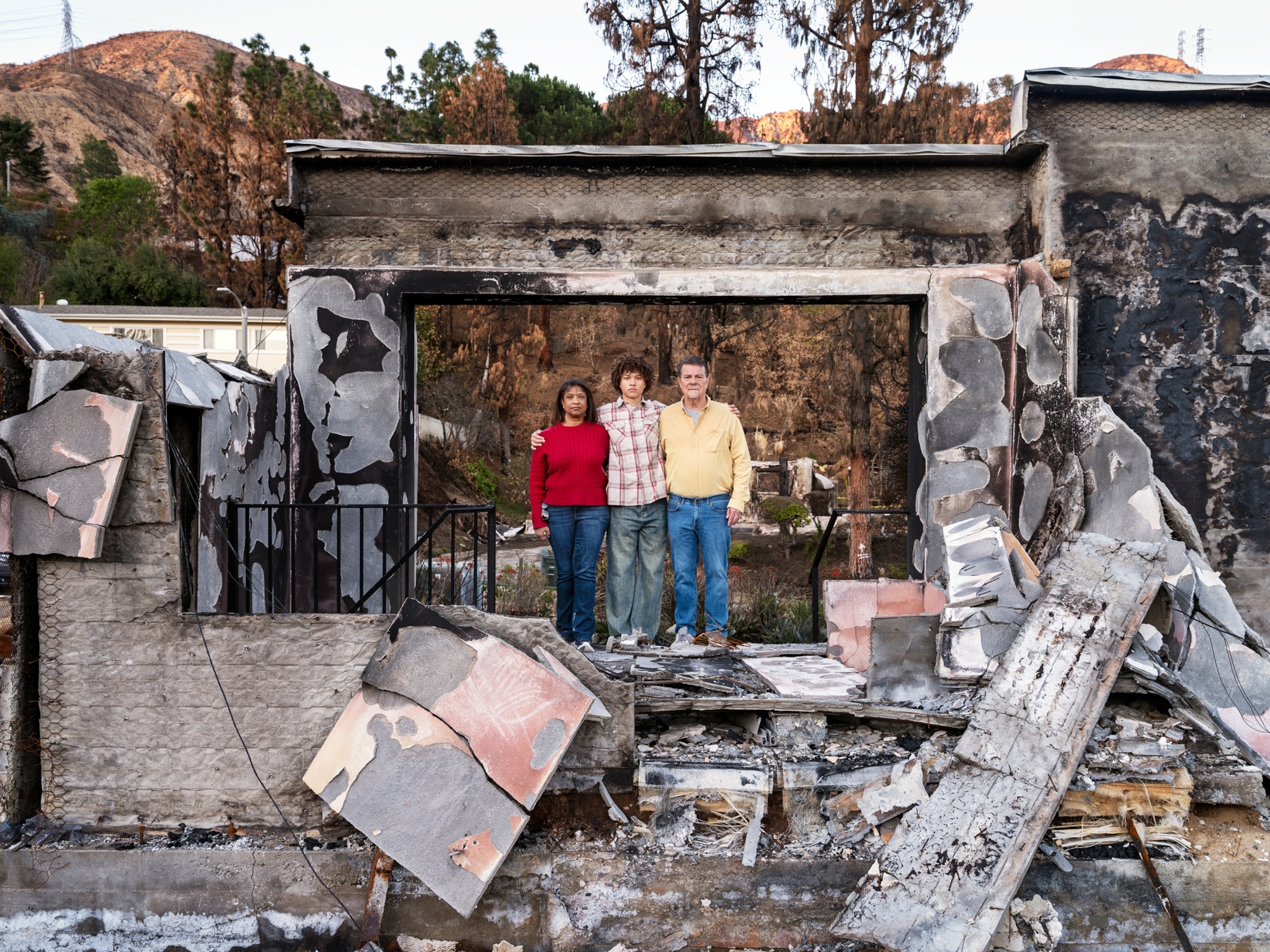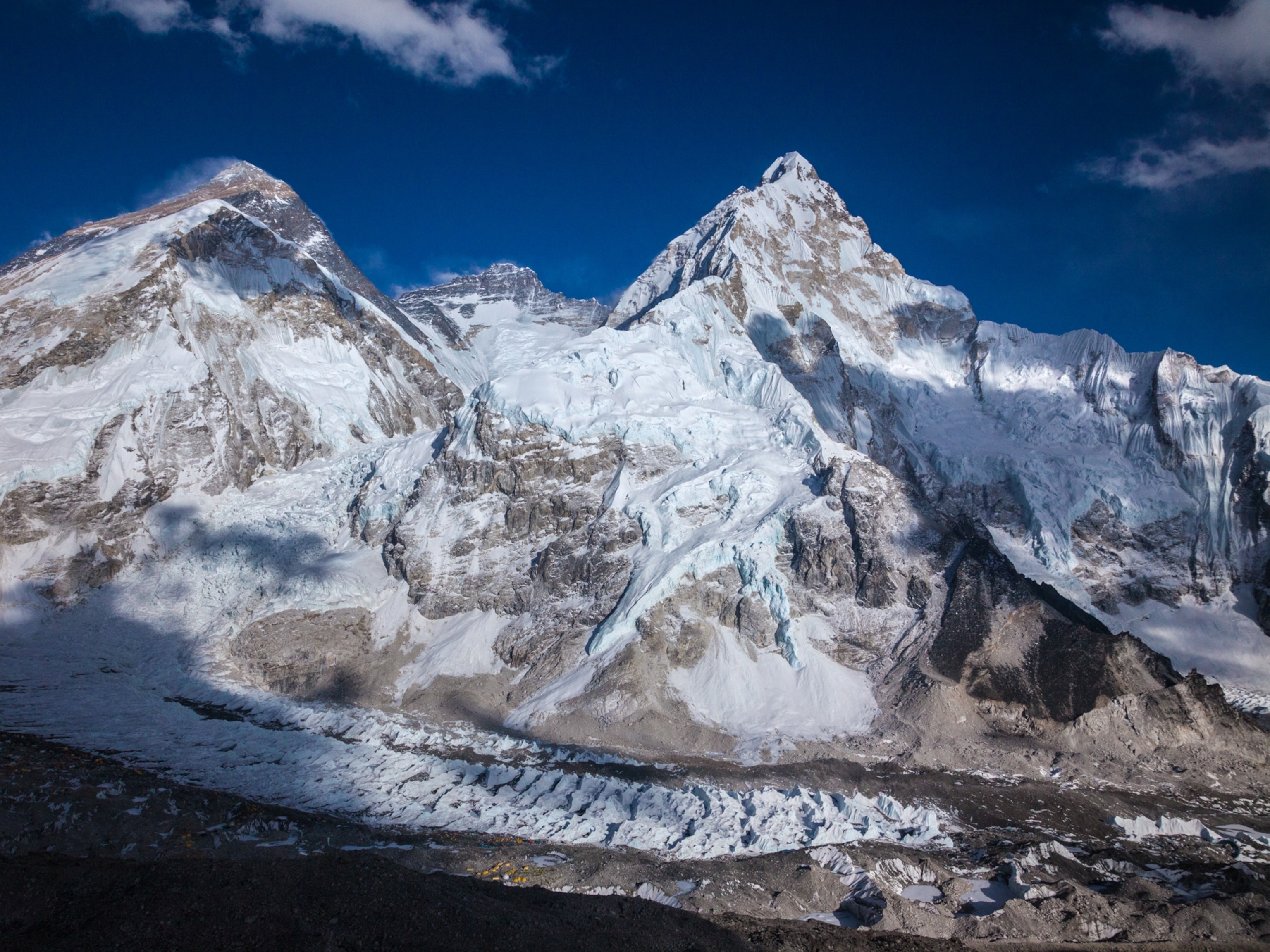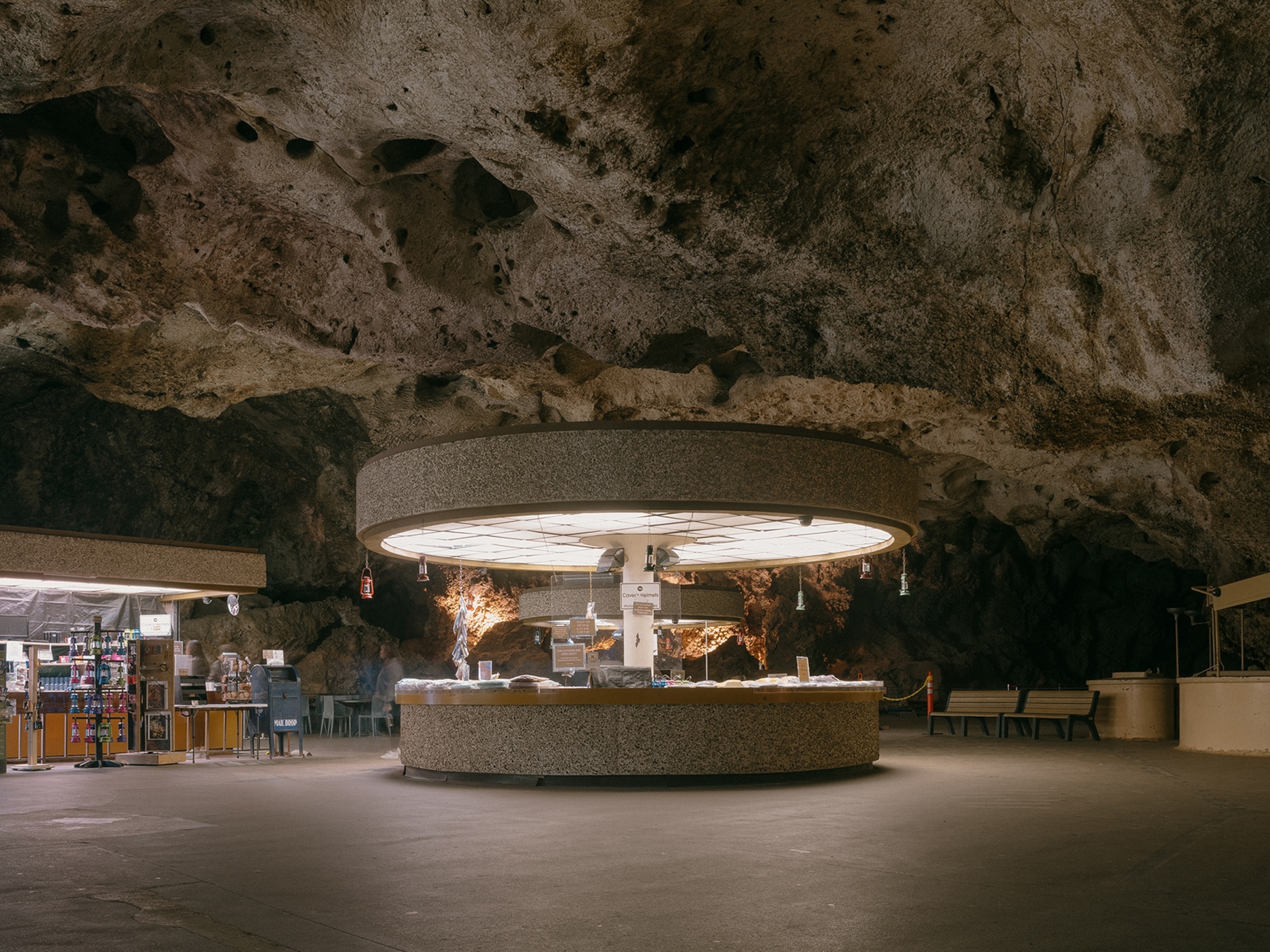A Roman-era ‘superhighway’ is disappearing. Italy has a plan to save it.
The Appian Way symbolized the Roman Empire’s might. Now Italy is restoring the ancient road, hoping to create a pilgrimage route through history.

There’s a McDonald’s on the outskirts of Rome where, after ordering a pancetta-laden Big Mac, you can peer through the glass floor and see—a few yards below—flat, gray paving stones of an ancient Roman road and twisted skeletons embedded in a two-millennia-old gutter.
These are remnants of an offshoot of Europe’s first major highway, the Appian Way. The route, begun in 312 B.C., meanders out of the city and across Italy’s southern regions until it reaches the eastern port city of Brindisi. It helped inspire the saying “All roads lead to Rome,” and in Italy it is still called Regina Viarum—the Queen of Roads. But its legacy has been largely neglected, buried with its stones under millennia of history.
Now an Italian government project is under way to transform the Appian Way (Via Appia) into a pilgrimage route from buzzing Rome to nautical Brindisi, a quiet city on the heel of Italy’s boot. In its roughly 360-mile span across the country, the Appia takes many forms: a forested dirt path, a town plaza, a highway. It’s not always scenic or pleasant, but it is an immersion into a slice of Italy few tourists see.
Before the crowds come, though, the Italian government first must dig out the Appia and in some cases, find it. That’s why, on a fall morning, I found myself looking down at the road from an outpost of a hamburger empire. In Rome, the Appia is an 11-mile-long stretch of well-preserved archaeological park. The last leg of this park is a woodsy uphill path. Then the Appia largely vanishes under asphalt for 50 miles. Its last appearance in the Eternal City is beneath the McDonald’s.
There lies this small offshoot of the Appia, one of the rare segments that have recently been excavated and preserved. When I ask a restaurant manager about the ancient cobblestones, he calls to a woman in sneakers sitting at a corner table. She introduces herself as Pamela Cerino, the archaeologist who dug out the road in 2014. In what I consider an earth-shattering coincidence, Cerino just happens to be visiting to discuss future projects at the site.
We exit the restaurant and descend a staircase to the ancient cobblestones. “The project was made on purpose so if you want to look at the road you don’t have to come into McDonald’s,” Cerino tells me. Three skeletons lie in the gutter—replicas of the bones she originally unearthed there. Above us, through the glass ceiling, we can see families feasting on McNuggets.


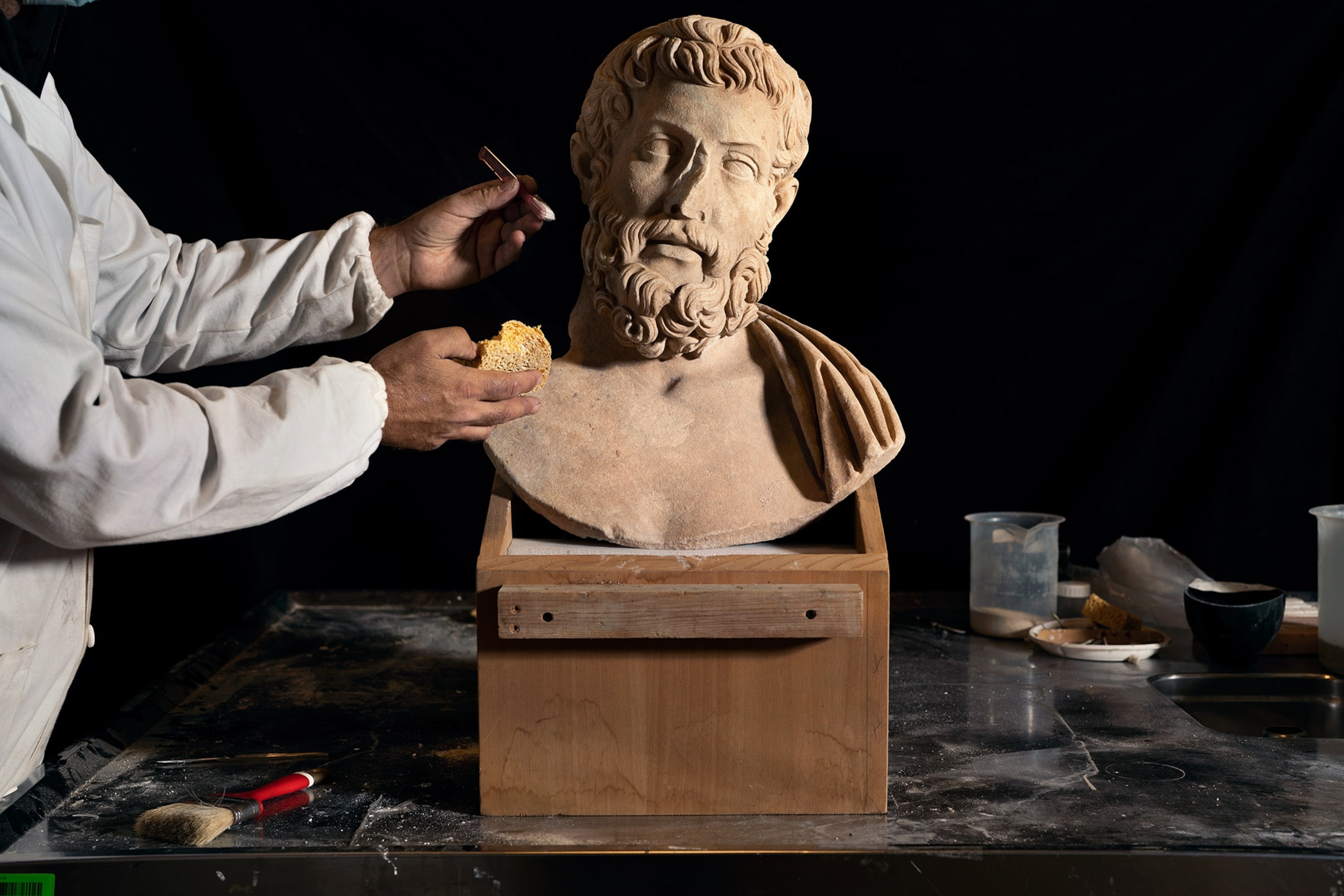
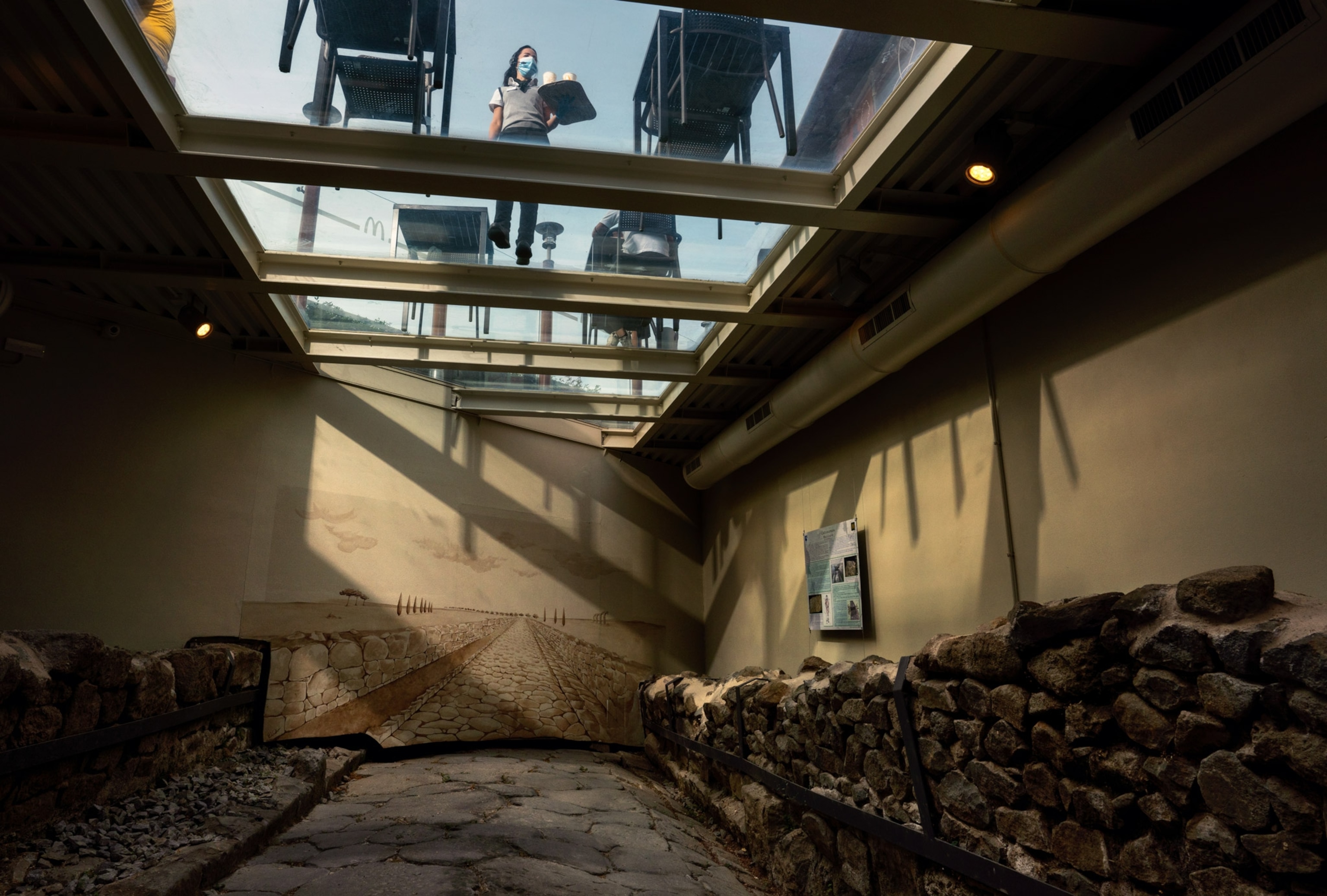
When a piece of the Appia was initially discovered during construction, locals feared the fast-food franchise was buying up old Roman treasures. Actually, Cerino says, archaeological sites often are reburied for preservation because their upkeep is so expensive. As I come to learn, glimpses of the Appia are few and far between, and it’s lucky this one ended up seen at all.
I. The route
The via Appia intersects cities, villages, mountains, and farmland as it crosses four regions and a hundred municipalities in Italy. Most of it has been paved into obscurity under Strada Statale 7, a busy road. But its original stones sometimes appear—alongside a cocktail bar in a village square, under heavy tarps in an overgrown field.
The Appia, as envisioned by Roman administrator Appius Claudius, was a tool for military domination. Enslaved people and laborers dug out an estimated 1.6 million cubic feet of dirt and stone for each freshly paved mile (the mile measurement itself was a Roman invention). Claudius named it after himself—a rare practice in those days that suggests its importance—but went blind and ultimately died before it was completed. The Appia barreled through the country in a nearly straight line, carrying the Roman Army as the empire consumed southern Italy and embarked east, via the sea, to spread its dominion abroad. It was the first of 29 bustling roads that shot out from Rome.
Accounts of travel along the Appia began with Latin poet Horace around 35 B.C., and it has had no shortage of articulate admirers since. But appreciation for the road as a feat of engineering faded after the Roman Empire began to collapse in A.D. 395, and the Appia gradually fell out of use. In an 1846 book, Charles Dickens described “tombs and temples, overthrown and prostrate.”
Then, in 2015, Italian writer Paolo Rumiz decided to walk the Appia for La Repubblica newspaper. The only problem: There was no modern map of the route. He contacted Riccardo Carnovalini, a prominent hiker who has spent nearly four decades traversing Italy. For two months, Carnovalini overlaid military maps, ancient shepherd paths, and satellite imagery to plot the Appia’s course. Then he loaded it into a GPS and walked alongside Rumiz.
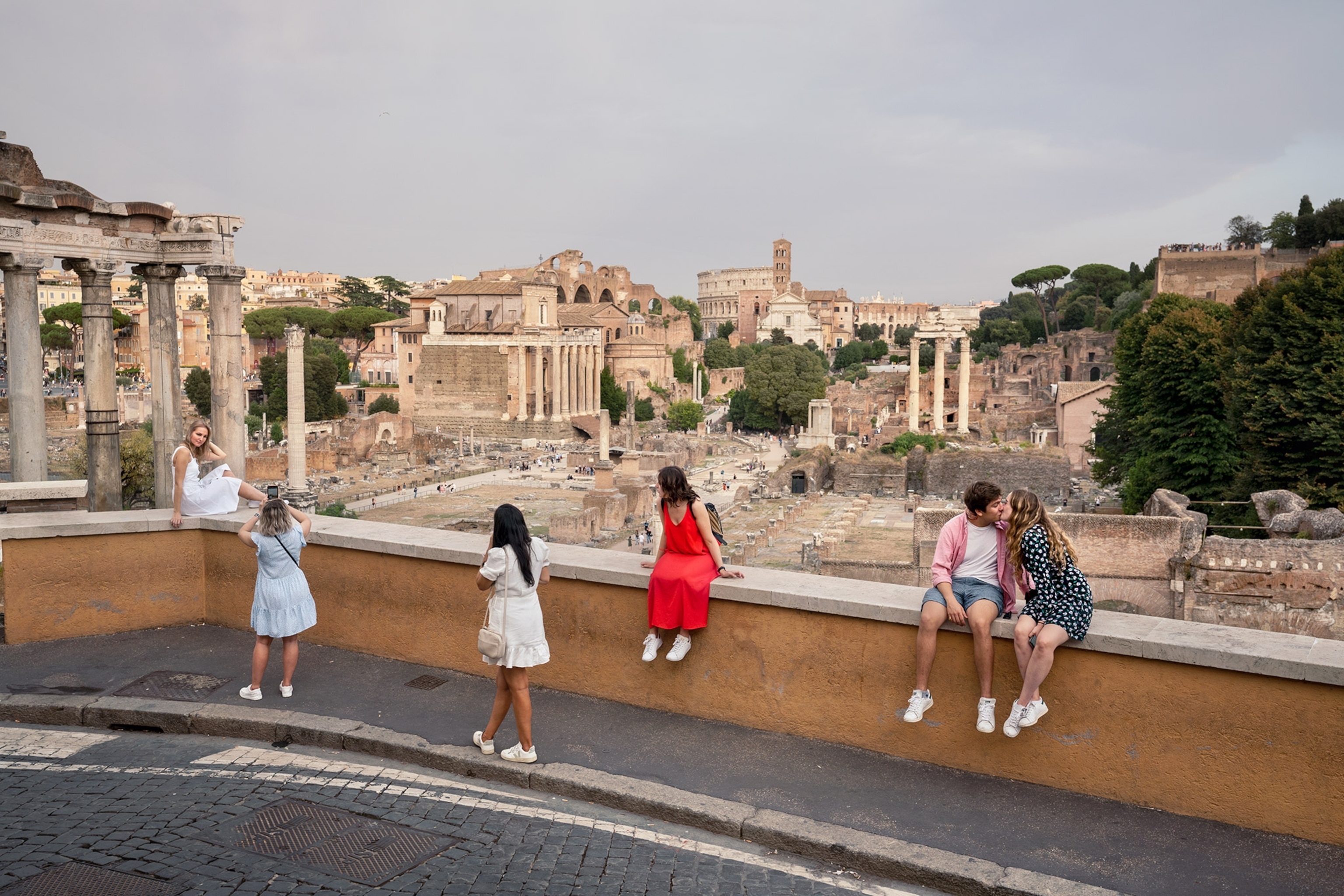
Rumiz’s journey drew the attention of the Ministry of Cultural Heritage, and in 2015 the Italian government announced a plan to resurrect the route. Centuries of lawless development had left archaeological treasures in private hands, and ancient villas recklessly remodeled. Preservation has begun, but without visitors, the Appia could be forgotten again.
“Walking,” Carnovalini tells me when I later meet him on the Appia’s trail, “is the most political act one can do to change the landscape.” But many obstacles are keeping walkers away, namely a difficult-to-find route, few accommodations, and little supportive infrastructure.
Enter Angelo Costa, founder of Studio Costa, one of the three architectural firms tasked with turning the Appia into a walkable journey. His proposal has a historical precedent: Ancient Romans following the Appia encountered a station to swap out their horses every 10 miles, and a guesthouse every 20 miles. Costa envisions an updated version, with 29 walking segments, each about six hours.
Travelers will explore the theaters of famed gladiator battles, sleep in simple guesthouses, and taste regional delicacies. Rest areas, lodging—some existing, some new—and attractions will be marked on an app. The less-is-more approach aims not to cover up the unpolished segments but to offer an honest experience.
“In the U.S., you have Route 66,” Costa says. “It’s not really about driving. It’s about the real America. We have Route 66—plus 2,000 years.”
But it’s not America the Appia is competing with. Costa isn’t the first of the Appia’s new designers to reveal that a quiet rivalry is brewing: The Camino de Santiago, Spain’s saintly route, typically attracts 300,000 walkers, and its destination, Santiago de Compostela, draws more than two million tourists annually.
From Rome to Brindisi, the Appia is a secular journey through Italian history. But done the other direction, it trails St. Paul as he traveled to Rome from Jerusalem. Compared with the Camino de Santiago, Costa says, “the nature is even better, the history is 200 times better. And at the end, you reach the pope.”
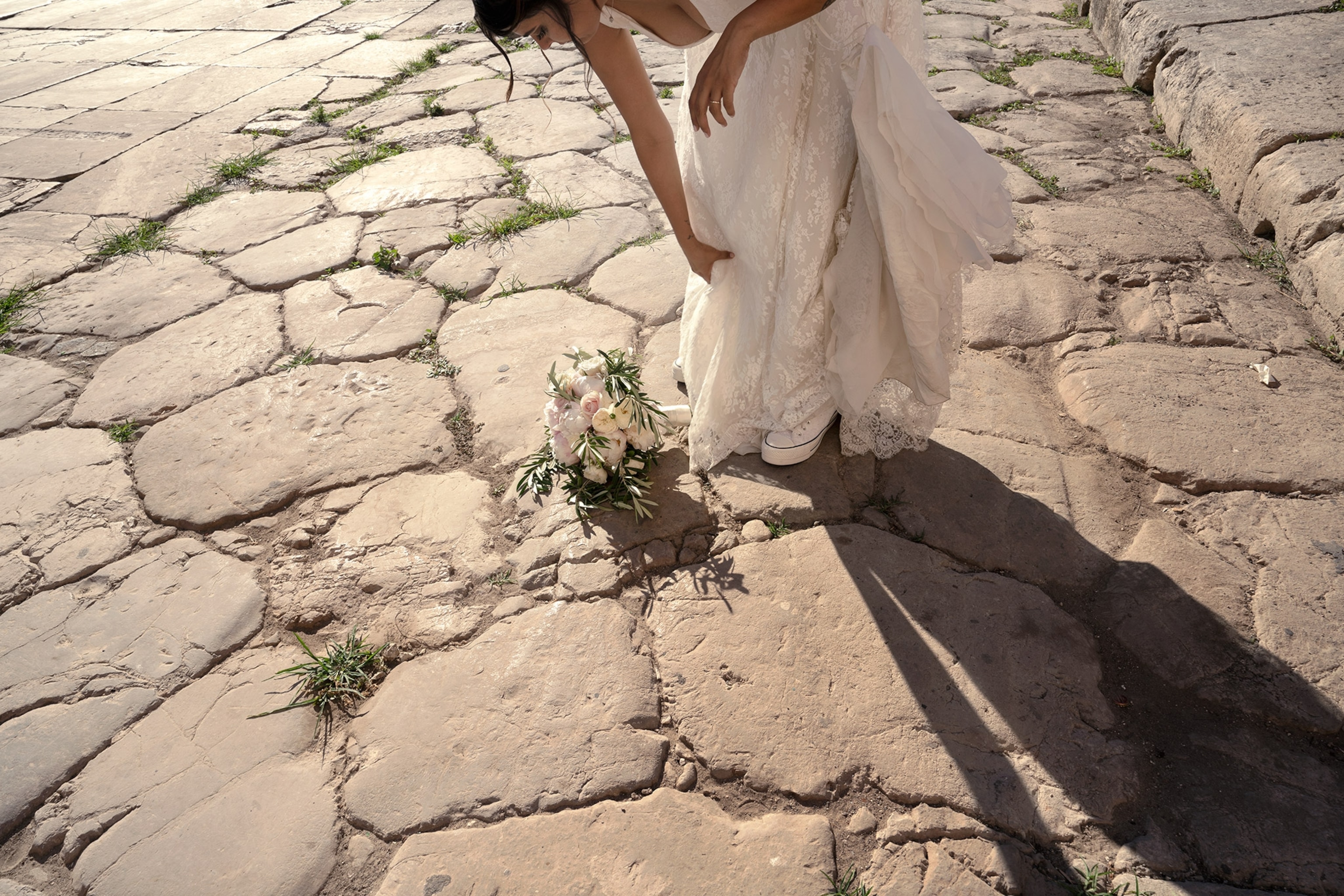
II. The start
To follow the Appia, I’d hoped to start at its beginning. I soon discover it hasn’t been unearthed yet.
The first cobblestones are likely buried near what is now a traffic-clogged roundabout at the center of Rome. Today, in an effort to locate them without halting the busy city, the Ministry of Cultural Heritage has been digging out small, deep strips of pavement—so far, unsuccessfully.
A few miles south is the Appia Antica Archaeological Park, the best preserved and most walkable piece of the road. Its path meanders from central Rome to the city’s outskirts, sprinkled on either side with some 400 archaeological sites: mosaic-filled Roman villas, a mazelike Christian catacomb with half a million dead, and mausoleums of enslaved persons and ancient society girls alike. “Stop, stranger,” one gravestone implores, “and look at this little mound of earth on the left, where the bones of a good person are enclosed.”
Modern life scrolls past: elderly couples on sunset strolls and birthday partygoers on horseback tours. Shepherds in small cars herd goats and sheep. Diners fork into platters of roasted meats outside Qui Nun Se More Mai—“Here you never die”—a cozy trattoria atop the Appia. The stones dip where two millennia of horse-drawn carts carved deep grooves.

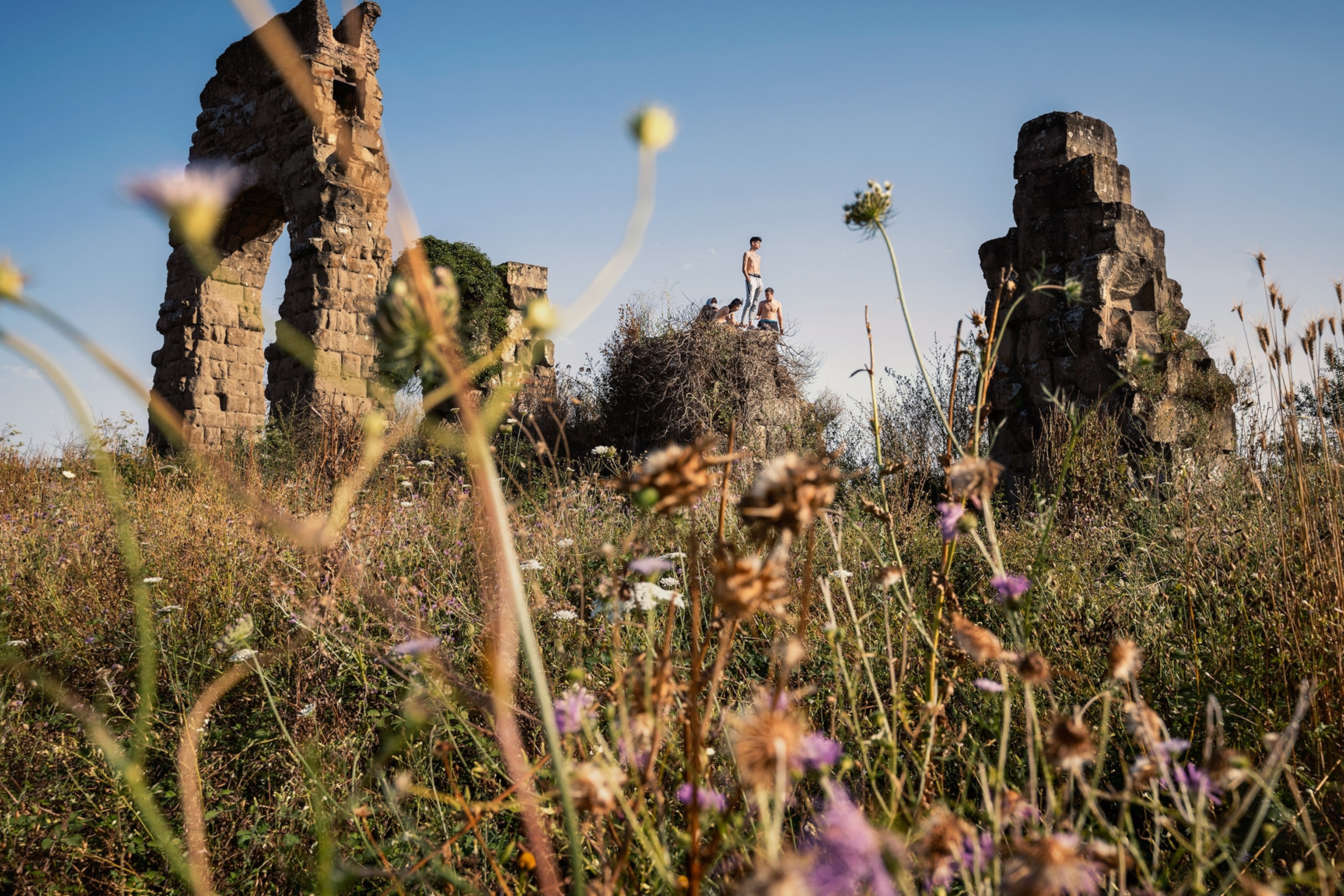
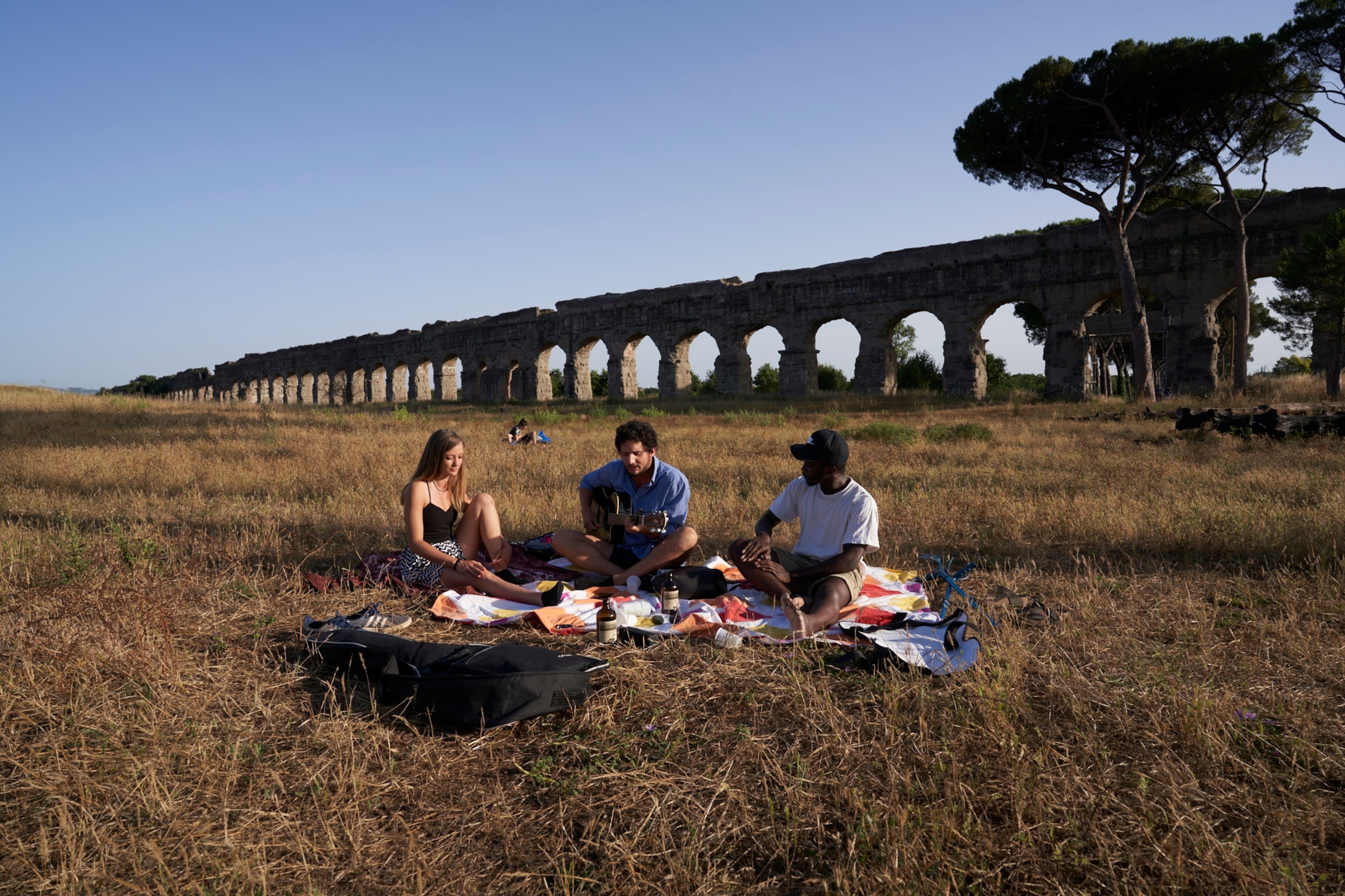
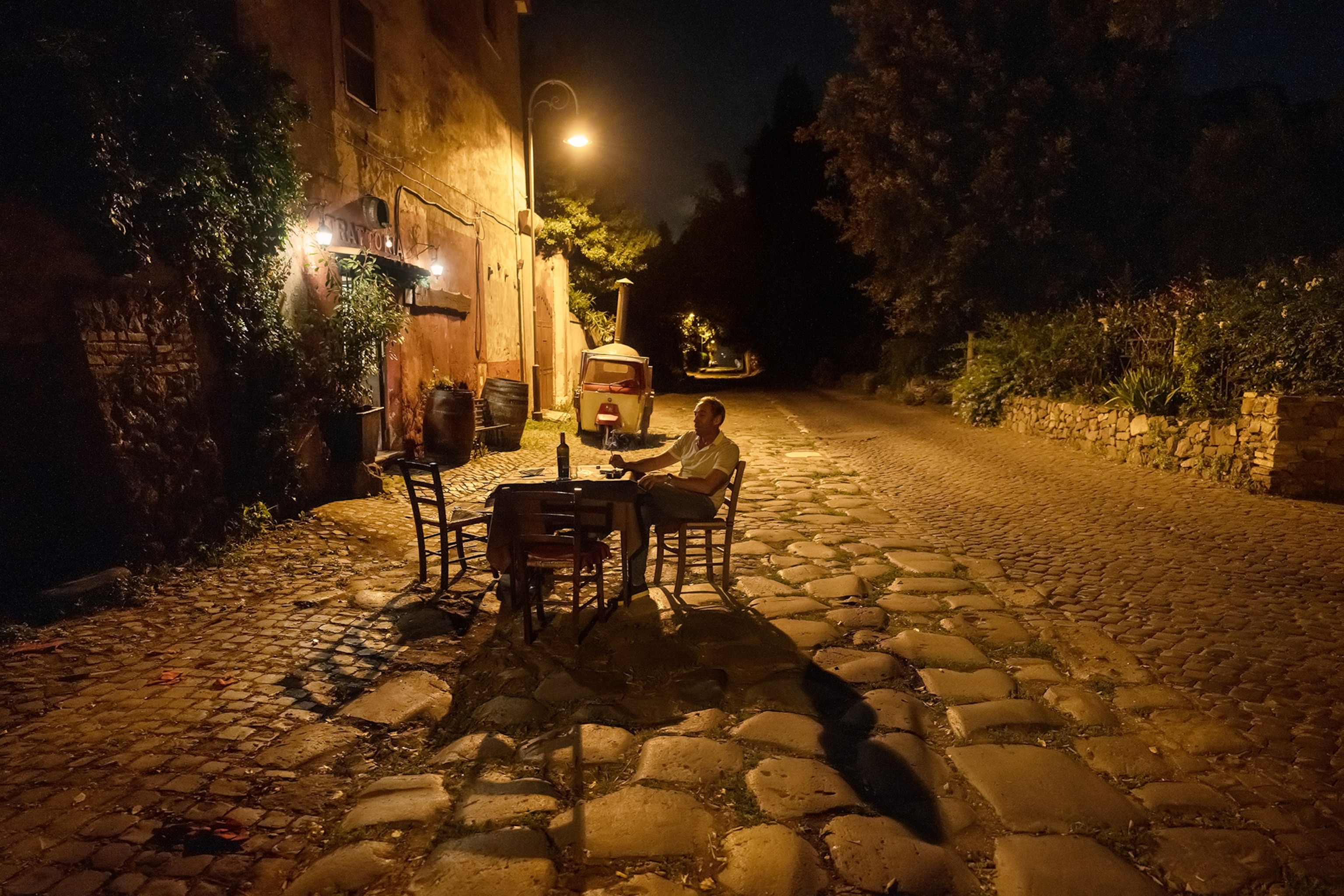
But the typical tourist to Rome is on a sightseeing blitz, staying only a few days before leaving for Florence or Venice. Before COVID-19, the archaeological park saw 100,000 visitors a year. Two miles north, the Colosseum drew over seven million. A new park director has installed an alluring schedule of concerts, festivals, and heritage days. It appeared to be working on a warm fall day: Parents picnicked in fields around a crumbled Roman stadium while children charged each other with fake gladiator swords.
There’s a peacefulness to this park that makes it unlike any of Rome’s other ancient attractions. As the Appia’s stones stretch away from the city, the archaeological sites thin until only a lone column or statue stands among lush fields. Stone pines with flat, leafy tops offer shade, and there are occasional historical markers and water fountains. But once the path hits the McDonald’s, the Appia disappears.
III. Walk through time
To decipher the Appia’s route beyond Rome, I enlist the help of Riccardo Carnovalini, the trekker who mapped it in 2015. We meet in the small city of Benevento, at a restaurant in the plaza. Carnovalini, who is 64, wears zip-off hiking pants, a fleece, and new boots that already have clocked nearly 450 miles. We fill a table with deep-fried zucchini flowers and cod stewed in tomato sauce. Over a minty aperitif, he quotes Italian author Italo Calvino, who once wrote that a visited country “must pass between the lips and down the esophagus.”
When Carnovalini and author Paolo Rumiz first walked the Appia in 2015, their course ended up about 50 miles longer than the original route. Modernity had consumed much of the early path, forcing them to navigate around highways and industrial zones.
We are already 140 miles from Rome, but Carnovalini describes this area as the start of the many disagreements over the Appia’s original path. To make the modern route, Carnovalini has studied maps, street angles, and building materials and chosen the most feasible option. Even so, pink and blue lines plotted on his GPS show the competing theories.
“There are other walks,” he says, as the waiters begin closing the restaurant for the night, “but they’re for tourism. This is not a walk; it’s history.”
The next day we pass by overburdened tractors chugging through tobacco fields, hills of spinning windmills, and fields being devoured by controlled fires. Carnovalini strolls effortlessly, cracking hazelnuts and picking wine grapes from curling vines along the path.
The Appia has literally been absorbed by these sleepy villages, its stones and columns embedded in walls and doorways. On long stretches, the red line on Carnovalini’s GPS is the only indication we’re still on the right track.

Short yellow paths indicate detours to keep walkers off major roads. As an adviser to the Ministry of Cultural Heritage, Carnovalini has mapped out dozens of these, both to circumvent the route’s impassable segments and to lead walkers to existing accommodations. Walking the Appia, I learn, doesn’t always mean walking on the Appia. Carnovalini takes me on one detour through the charming hilltop village of Frigento, where we descend into a Roman cistern and greet the town’s free-roaming resident peacocks.
IV. Honest tourism
The Ministry of Cultural Heritage has earmarked 20 million euros ($22 million) to develop the Appia for tourism, but as I visit archaeological sites along the route, it’s clear more funds are being eagerly awaited. Archaeologists spent 2020 excavating a 50-yard stretch of Appian cobblestones in a town called Passo di Mirabella. Today it’s hidden under a large protective sheet. Another phase of funding is necessary for the team to continue preserving their finds.
It’s the same story across Italy, where an economic dip has forced the national government to cut the cultural heritage budget every year for the past decade—leading to the reburying of discovered sites. The cash injection along the Appia’s path is welcome, but it’s going to require sustained upkeep. These regions tend to be overlooked, archaeologists tell me. When there’s money, one says, it usually ends up in Pompeii and Herculaneum.
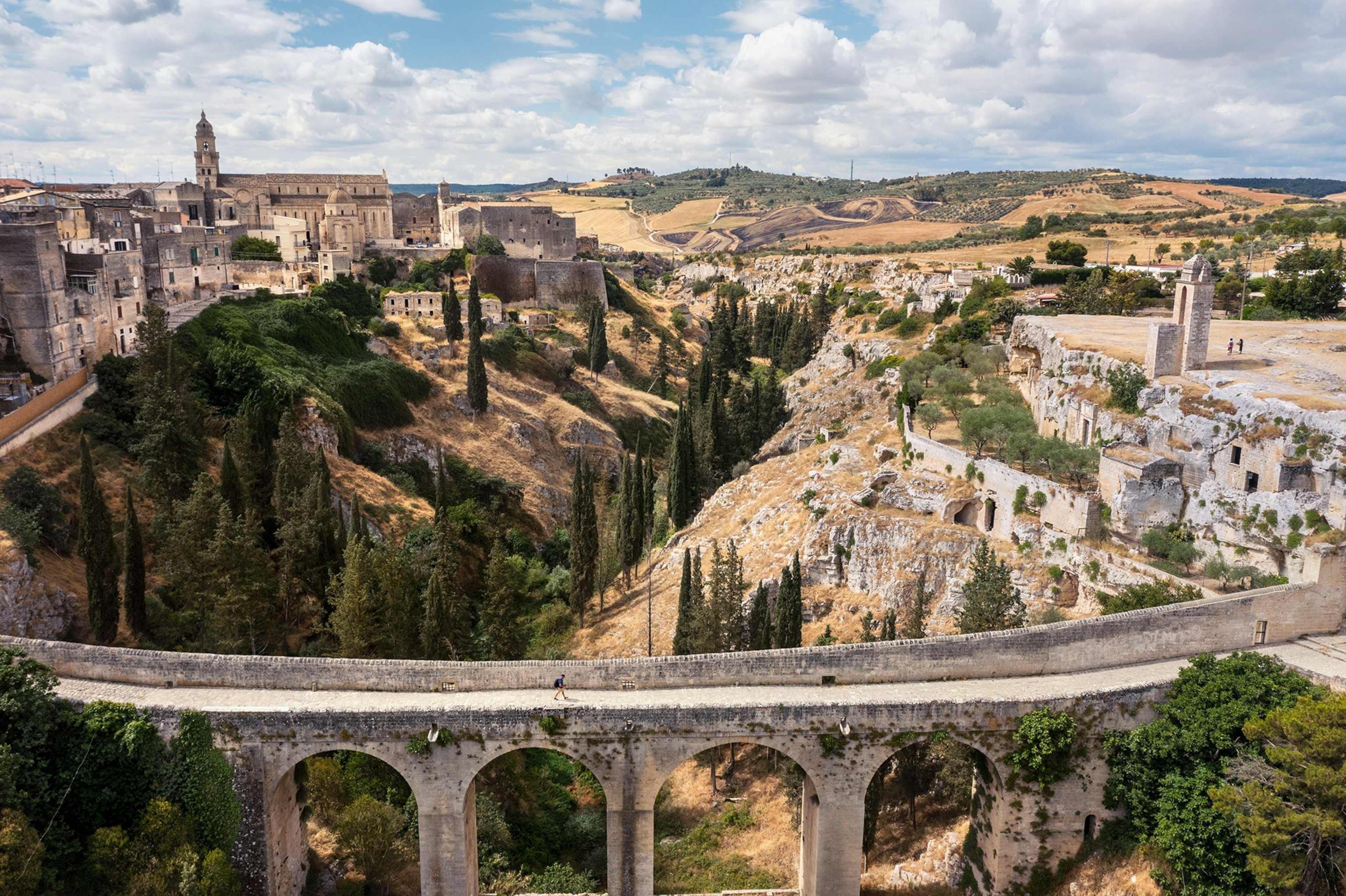
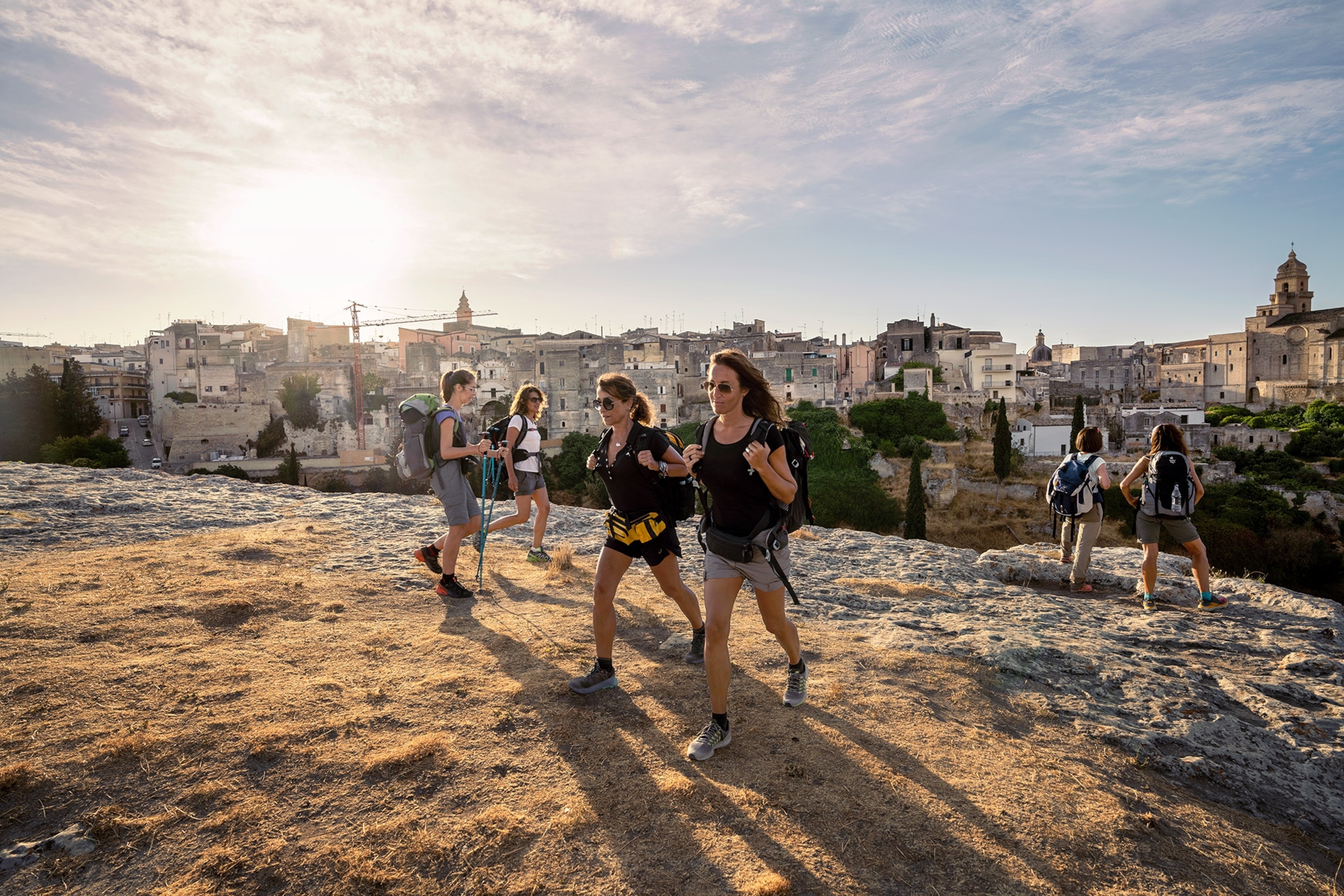
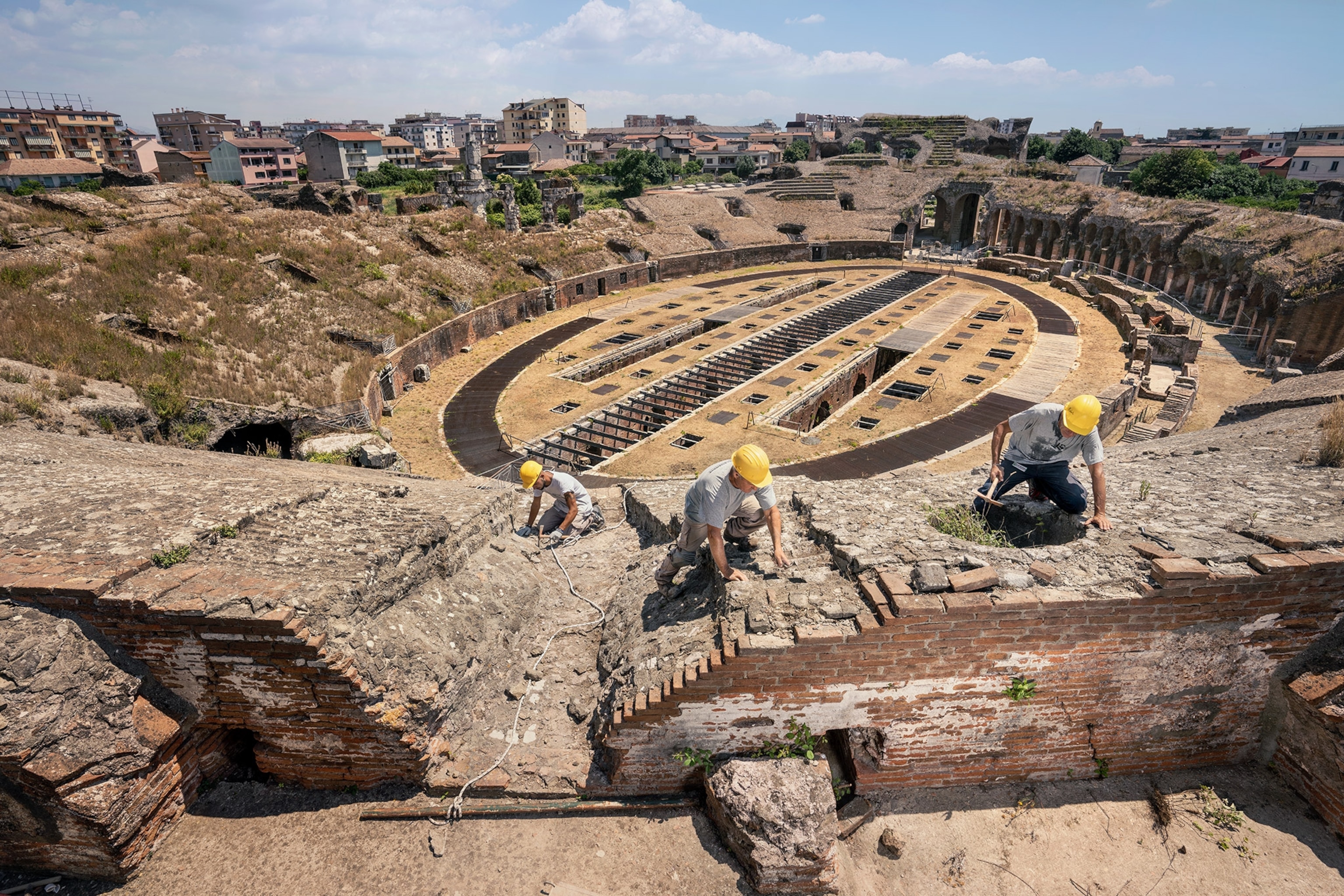

Carnovalini had cautioned that a journey along the Appia is unique for its honesty. “The Appian experience is up and down,” he said. “In one moment you’re saying, ‘Wow, that’s beautiful,’ then you turn your head and say, ‘Wow, that’s horrible.’
“Italy,” he added, “is not a postcard.”
That truth crystallizes as I approach Taranto, a port city roughly 40 miles from the Appia’s end. This is the only place where Carnovalini and Rumiz were forced to hail a taxi during their trek. Before me is a six-square-mile expanse of industrial production. This pollution-belching steel plant, the largest in Europe, has turned Taranto into “the trenches of Italy,” an Italian journalist warned me before I arrived.
The Appia runs alongside the factory and into an island that holds Taranto’s old town. It feels time has rewound 60 years. In tiny storefronts, old men paint religious figurines to sell to the few tourists. Fishing boats jostle for space along the boardwalk; I am told that dolphins and whales are sometimes visible on the horizon. Winding alleys lead to a cathedral dripping with marble. Taranto instantly becomes my favorite spot along the Appia. But above this mirage of old Italy, black plumes billow from smokestacks.
Taranto was the only city founded by the Spartans outside Greece, and a row of Greek columns still stands near the water. This is where I meet Massimo Castellana, a member of an activist coalition fighting to close the factory. On windy days, when steel particles blow into town, residents shut their windows and keep their kids home from school. Studies have shown high levels of cancer here compared with the rest of Italy, particularly among children. Taranto should be known for its beauty, Castellana says, not its industry. But despite years of protests, the factory remains open.
Among the many hopes embedded in the revival of the Appia by people like Castellana is that harnessing history for tourism can reverse the fortunes of southern Italy, which has long been stereotyped as old-fashioned and crime ridden. As I head from Taranto to Brindisi, the Appia’s end, I stop in the once walled city of Mesagne where I meet Simonetta Dellomonaco, head of the regional film commission, who tells me her guiding adage: “Culture is the only fuel that doesn’t pollute the more you consume.”
When Dellomonaco was growing up, Mesagne was known as the birthplace of Italy’s fourth Mafia family, the Sacra Corona Unita. Today that image is being replaced by scenic Hollywood cameos, including in the latest James Bond film.
As we speak, actors playing Native Americans are riding through a nearby park that’s posing as the American West. And just outside town, archaeologists have unearthed the last visible stretch of the Appia’s original cobblestones. Investing in its heritage landed Mesagne as a finalist for Italy’s 2024 Capital of Culture. “They used to say every road leads to Rome,” Dellomonaco says. “But here the most important ends.”

V. End of the road
“Under the Romans, Brindisi reached its biggest splendor,” a local guide is telling a small crowd gathered on the boardwalk in Brindisi. “They understood the importance of the port. From Brindisi you could take off for the East.” It’s Via Appia Day, an annual celebration, and the group is touring the route’s end point on a sunny October afternoon. Around 266 B.C., the Romans arrived here, defeated the Messapian civilization, and completed the Appian Way.
The guide is climbing a tall set of stairs, toward the columns that famously mark the end of the route. The group gathers for a photo around a towering column and the base of its twin (the rest was gifted to a neighboring city centuries ago). “These columns are commonly considered the end of the Appian Way,” she is saying. “But not everyone agrees.”
Hold on. The Appia’s starting point was uncertain, but the finale was always clear: two columns framing the Adriatic Sea in Brindisi. But analysis of the marble has revealed they were built two centuries later.
An archaeologist on the Appia’s excavation warns me not to get too consumed with finding its end. The Appia is chameleon-like, changing from street to route to highway—more a system than a line. “We’re chasing a myth,” he says.
What’s important is that the Appia turned Brindisi into a global powerhouse, from which the Roman Army set off to expand its empire east to cities like Alexandria and Jerusalem. Eventually, the Roman Empire ruled a quarter of the human population across three continents.
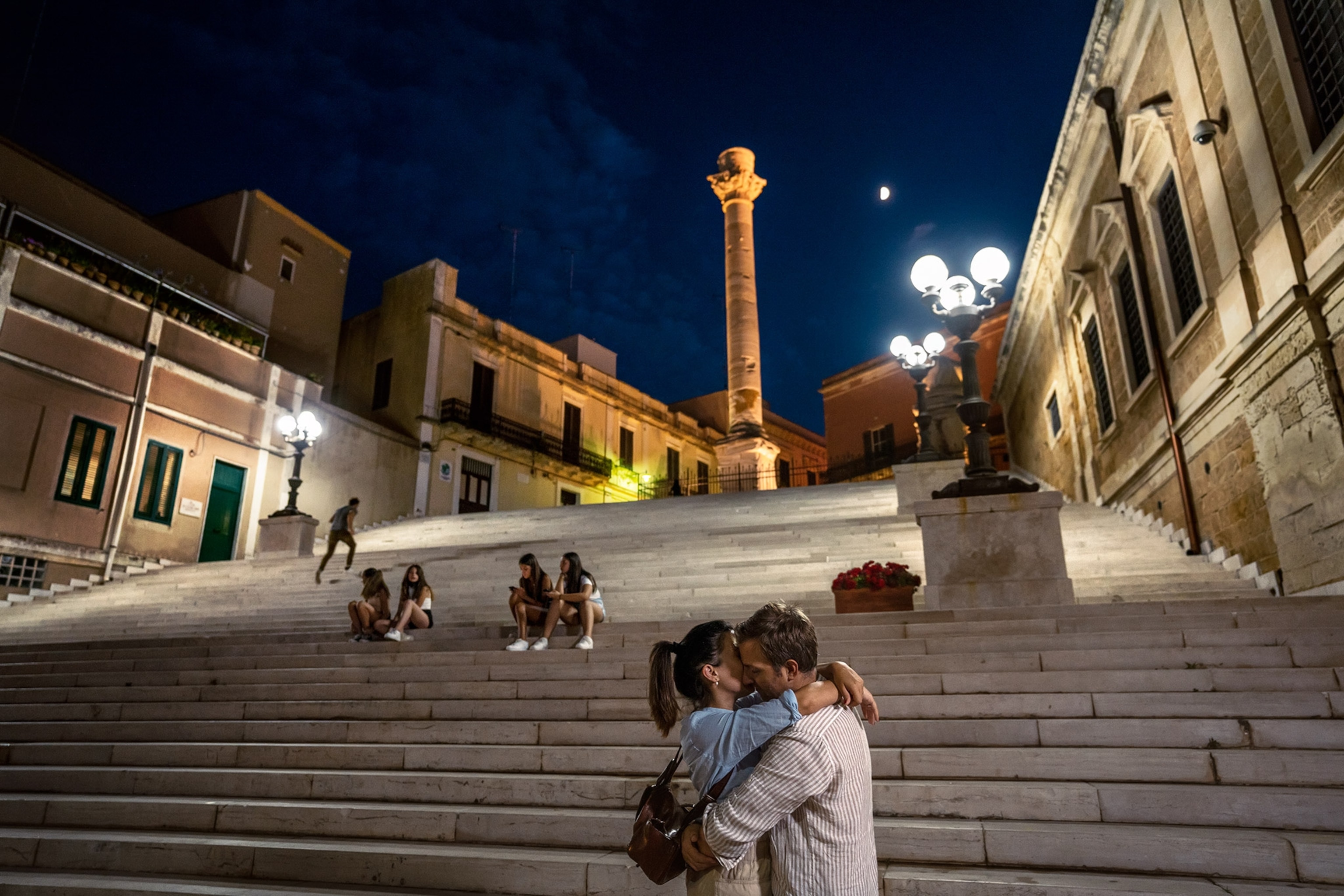
Brindisi became a destination for Holy Land pilgrims, who waited for weeks to board the next boat to Jerusalem. Now, a couple hundred travelers show up each year via various hiking routes that lead to the city. Restoring Brindisi’s reputation as a destination is the personal crusade of Rosy Barretta. Barretta privately funds an organization that arranges visits for pilgrims, called Brindisi and the Ancient Roads, and her family runs a large tugboat company. “It was a waste that no one was taking care of this piece of engineering and inventiveness,” she says. She imagines Brindisi once again filled with travelers tracing the Appia’s path.
(In this episode of our podcast Overheard, hear why the Appian Way in Italy is thought of as the OG superhighway. Listen now on Apple Podcasts.)
The morning after the tour, she invites me to join her on a tugboat to see the port. Skinny roads stretch out from the city into the sea, creating a sheltering circle around Brindisi and giving it the appearance of having antlers. The Alfonsino Castle sits on one of these “horns,” surrounded by the Adriatic, its stone walls glimmering in the sun. Barretta dreams of transforming it into a national Appia museum. She envisions its restored lighthouse beaming a spotlight 60 miles over the water, drawing in cruise ships and destination weddings.
We watch as a hulking ship approaches the port of Brindisi. Our tugboat’s captain, a young Brindisi native named Alessandro di Giulio, opens an app on his phone and tracks the boat back to its departure point in Mozambique. It carries raw sugar, he says, which will be unloaded and processed locally.
The water is calm as two of Barretta’s tugboats rush to greet the ship and begin to pull it into port. Di Giulio tells me he recently moved back home after a decade abroad working for Carnival Cruises. He saw the Middle East, Africa, and the Caribbean but always dreamed of returning to the port of Brindisi, where ships have been unloading goods and passengers for thousands of years. “From my professional point of view,” he says, “it’s the center of the world.”
This story appears in the July 2022 issue of National Geographic magazine.

